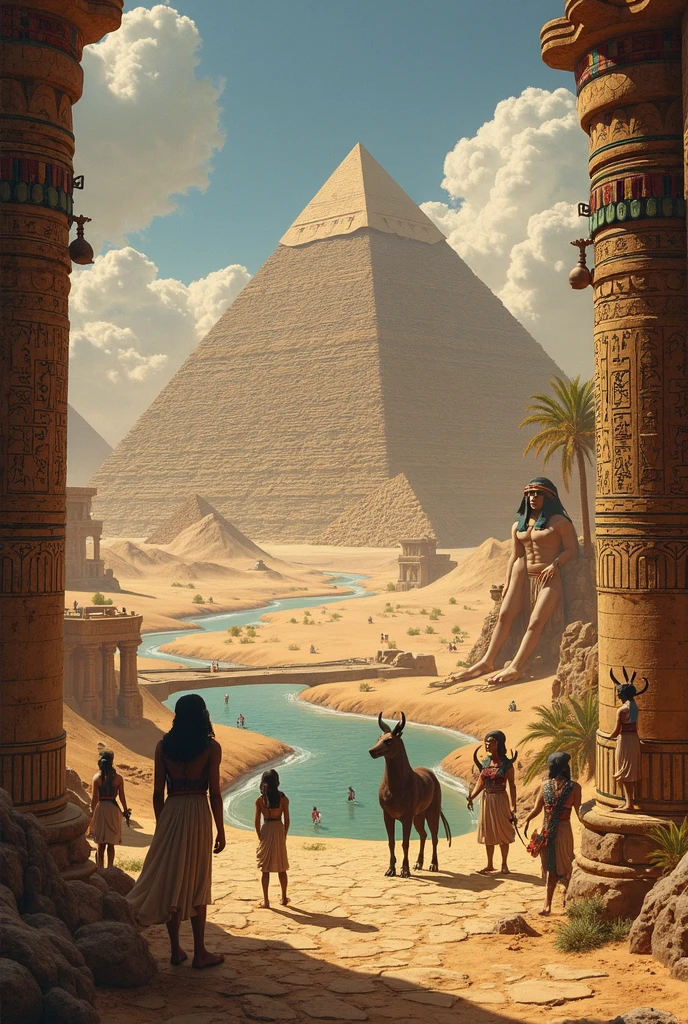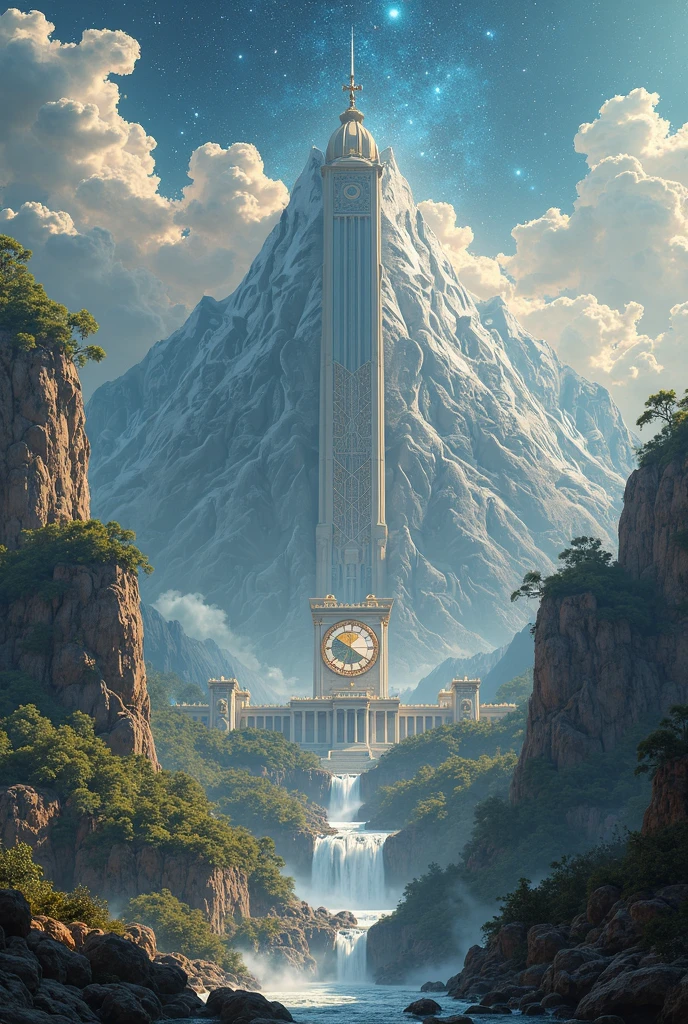Mayan Mythology: Gods, Legends, and Cosmic Cycles
The ancient Maya civilization left behind a rich legacy of myths, gods, and cosmological beliefs that continue to fascinate scholars and enthusiasts alike. Central to their worldview was Kukulkan, the feathered serpent deity, alongside other pivotal figures like Chaac, the rain god, and Itzamná, the creator. Their stories, recorded in texts like the Popol Vuh, reveal a complex understanding of life, death, and the underworld known as Xibalbá. The Maya also developed an intricate calendar system that intertwined with their mythology.
The Pantheon of Mayan Gods
Mayan mythology features a diverse array of deities, each governing natural forces, celestial bodies, or human endeavors. Below is a table highlighting key gods and their domains:
| God | Role | Symbolism |
|---|---|---|
| Kukulkan | Feathered serpent, wind, wisdom | Linked to Quetzalcoatl (Aztec), rebirth |
| Chaac | Rain and agriculture | Depicted with an axe or serpentine nose |
| Itzamná | Creator, writing, and science | Often shown as an old man with celestial motifs |
| Ixchel | Moon, fertility, and weaving | Associated with jaguars and childbirth |
Kukulkan: The Feathered Serpent
Kukulkan, one of the most revered deities in Mayan mythology, symbolized wind, wisdom, and the cyclical nature of time. Often depicted as a serpent with vibrant feathers, this god was believed to descend upon the pyramid of Chichén Itzá during equinoxes, casting a shadow resembling a slithering snake. Key aspects of Kukulkan include:
- Cosmic duality: Represented both earth (serpent) and sky (feathers).
- Cultural influence: Shared traits with the Aztec god Quetzalcoatl.
- Architectural homage: Temples like El Castillo were aligned to honor his movements.
For further reading on Kukulkan’s significance, visit The Metropolitan Museum of Art.
Chaac: The Life-Giving Rain God
Agriculture was vital to the Maya, making Chaac a crucial deity. He controlled storms, floods, and droughts, often invoked through rituals to ensure bountiful harvests. Chaac’s imagery is distinctive:
- His elongated nose resembles a lightning bolt.
- Holds an axe to summon thunder.
- Associated with the four cardinal directions (each with a Chaac variant).
Rituals Honoring Chaac
Ceremonies included offerings of corn, jade, and even bloodletting to appease Chaac. Droughts were seen as his displeasure, prompting elaborate petitions.
The Popol Vuh: Sacred Mayan Text
The Popol Vuh, often called the “Mayan Bible,” recounts creation myths, hero twins’ adventures, and the underworld (Xibalbá). Key episodes include:
- The gods’ failed attempts to create humans from mud and wood.
- The Hero Twins Hunahpu and Xbalanque defeating Xibalbá’s lords.
- The final creation of humanity from maize.
Explore the Library of Congress for digitized versions of the Popol Vuh.
Xibalbá: The Mayan Underworld
Xibalbá was a treacherous realm of decay and tests, ruled by death gods. The Hero Twins’ journey through its nine levels symbolizes resilience and the triumph of life over death. Notable features:
- Rivers of scorpions and blood.
- Deceptive lords who tricked the unwary.
- A ballgame representing cosmic struggle.
The Mayan Calendar: A Mythological Blueprint
The Maya developed a sophisticated calendar system interwoven with their myths. Its components included:
| Calendar Type | Purpose | Duration |
|---|---|---|
| Tzolk’in | Sacred ritual cycle | 260 days |
| Haab’ | Solar agricultural cycle | 365 days |
| Long Count | Historical and prophetic | 5,125 years |
Learn more about the Mayan calendar at NASA’s educational resources.
Descubre más artículos sobre mitología y cultura en nuestra web y síguenos en facebook.com/zatiandrops.
Beyond gods and cosmic cycles, animals played a pivotal role in Mayan mythology, often serving as spiritual guides or manifestations of deities. The jaguar, for instance, symbolized power and the underworld, while the quetzal bird represented freedom and divine connection. These creatures were not merely symbols but active participants in myths, shaping the Maya’s understanding of the natural and supernatural worlds.
The Jaguar: Guardian of the Night and Underworld
In Mayan culture, the jaguar (Balam) was revered as a nocturnal protector and a bridge between realms. Its significance is evident in:
- Royal symbolism: Kings often wore jaguar pelts or adopted names like “Jaguar Paw” to invoke its strength.
- Xibalbá’s gatekeeper: The jaguar was believed to patrol the underworld’s borders.
- Astral associations: The Maya linked jaguars to the moon and darkness, contrasting the sun’s eagle.
Jaguar Deities and Rituals
Notable jaguar-related gods included Ek Balam (Black Jaguar), a war deity, and Ixchel, who sometimes appeared with jaguar attributes. Rituals involving jaguar imagery included:
- Dances where priests donned jaguar masks to channel their energy.
- Offerings of jade or obsidian carved into jaguar shapes to secure protection.
- Use of jaguar bones in divination ceremonies.
The Sacred Quetzal: Feathers of the Gods
The quetzal bird, with its iridescent green plumage, was a living emblem of divinity. Its feathers adorned headdresses of rulers and statues of Kukulkan, symbolizing:
| Aspect | Meaning |
|---|---|
| Flight | Connection between earth and sky |
| Rarity | Only kings and priests could wear its feathers |
| Sacrifice | Quetzals died in captivity, echoing the gods’ self-sacrifice |
Cosmic Trees and the Axis Mundi
The Maya envisioned the universe as structured around the World Tree (Yaxche), a celestial axis linking the heavens, earth, and Xibalbá. Each direction had a colored tree with unique symbolism:
- East (Red): Sunrise and rebirth.
- North (White): Ancestral wisdom.
- West (Black): Death and sunset.
- South (Yellow): Growth and maize.
- Center (Green): The primordial tree of life.
This concept influenced Mayan architecture, with pyramids like El Mirador designed as symbolic trees.
The Hero Twins: Hunahpu and Xbalanque
While briefly mentioned in the Popol Vuh, the Hero Twins’ exploits extended beyond Xibalbá. Their adventures included:
- Defeating the arrogant bird demon Vucub Caquix, who pretended to be the sun.
- Transforming into the moon and sun after their final sacrifice.
- Teaching humans the art of ballgame (Pitz), a ritual reenactment of their battles.
The Ballgame: More Than Sport
The Mayan ballgame was a sacred event with mythological undertones. Key elements:
| Feature | Mythological Link |
|---|---|
| Rubber ball | Represented the sun’s movement |
| Stone rings | Portals to the underworld |
| Player sacrifices | Mirrored the Hero Twins’ resurrection |
Mayan Astrology: The Zodiac of the New World
The Maya developed a complex astrological system tied to their calendar, where each day had a spirit animal or natural force. Notable signs included:
- B’atz’ (Monkey): Creativity and mischief.
- K’at (Net): Community and entanglement.
- Aj (Cane): Leadership and resilience.
Unlike Western zodiacs, Mayan signs cycled with the Tzolk’in, offering daily guidance rather than monthly.
Sacred Caves: Portals to the Otherworld
To the Maya, caves like Actun Tunichil Muknal were literal entrances to Xibalbá. Archaeologists have found:
- Ceramic vessels holding soul offerings (ch’ulel).
- Calcified remains of sacrificial victims, dubbed “The Crystal Maiden.”
- Stone altars where priests communicated with ancestors.
Modern Discoveries and Ongoing Research
Recent Lidar scans revealed hidden cave networks beneath cities like Tikal, suggesting their urban planning mirrored mythological geography. For updates, visit National Geographic.
Mayan Prophecies and the 2012 Phenomenon
The misinterpretation of the Long Count calendar’s end in 2012 sparked global fascination. In reality, the Maya viewed it as:
- A transition between cosmic eras, not an apocalypse.
- A time for renewal, akin to their previous cycle endings.
- A call to realign with natural rhythms, as recorded in the Dresden Codex.
Descubre más artículos sobre mitología y cultura en nuestra web y síguenos en facebook.com/zatiandrops.
Mayan Creation Myths: The Role of Maize
Central to Mayan mythology was the belief that humans were created from maize, a sacred crop that sustained their civilization. Unlike earlier failed attempts using mud or wood, the gods finally crafted humanity from white and yellow corn dough, mixed with divine blood. This myth underscored:
- Agricultural dependence: Maize was not just food but the essence of life.
- Divine sacrifice: Gods like Itzamná bled to give humans consciousness.
- Cyclical rebirth: Planting and harvest mirrored creation and renewal.
Rituals of Gratitude
To honor this gift, the Maya performed ceremonies such as:
- First-fruit offerings: Maize cobs were presented at temples before consumption.
- Bloodletting: Royals drew blood to “feed” the gods, reciprocating their sacrifice.
- Maize god dances: Performers wore elaborate headdresses depicting the youthful deity.
The Dresden Codex: A Window into Mayan Astronomy
Among the few surviving pre-Columbian books, the Dresden Codex reveals advanced astronomical knowledge intertwined with myth. Key sections include:
| Page Range | Content | Mythological Link |
|---|---|---|
| 24–29 | Venus cycle tables | War god K’awiil’s influence during Venus risings |
| 30–37 | Eclipse predictions | Serpent deities devouring the sun |
| 50–58 | Flood warnings | Chaac’s destructive potential |
For high-resolution scans, explore the New York Public Library’s digital collection.
Women in Mayan Mythology: Beyond Ixchel
While Ixchel is the most recognized goddess, other female deities played vital roles:
- Ix Tab: Goddess of suicide, guiding hanged souls to paradise—a stark contrast to modern views.
- Ix Chebel Yax: Patron of weaving and art, who taught women creative skills.
- Goddess O: A mysterious figure linked to the moon and childbirth, often depicted with a rabbit.
Matrilineal Power
Royal women like Lady K’abel of El Perú-Waka’ wielded significant influence, embodying both political and divine authority as incarnations of these goddesses.
The Bacabs: Pillars of the Cosmos
Four Bacab brothers held up the sky, each representing a cardinal direction and color:
| Direction | Bacab Name | Associated Element |
|---|---|---|
| East | Kan Bacab | Fire and dawn |
| North | Sac Bacab | Wind and ancestors |
| West | Ek Bacab | Rain and storms |
| South | Chac Bacab | Earth and fertility |
Their collapse was believed to cause world-ending floods, echoing global deluge myths.
Mayan Ritual Masks: Faces of the Divine
Masks were not mere costumes but conduits for gods during ceremonies. Crafted from jade, obsidian, or stucco, they depicted:
- Deities: Like the sun-eyed Kinich Ahau or the skeletal Ah Puch.
- Ancestors: Worn to channel wisdom during rites.
- Animals: Jaguar masks for warriors, hummingbird masks for messengers.
Modern Rediscoveries
In 2021, a 1,300-year-old jade mask of Pakal the Great was unearthed in Palenque, confirming kings’ divine portrayals. Learn more at Archaeology Magazine.
The Floating Head: A Unique Mayan Motif
Artworks often show disembodied heads hovering above scenes, symbolizing:
- Decapitation: Linked to the Hero Twins’ ballgame victory over the lords of Xibalbá.
- Spiritual release: The head as the soul’s vessel after death.
- Agricultural cycles: Severed heads sprouting maize, as seen at Copalán’s sculptures.
Descubre más artículos sobre mitología y cultura en nuestra web y síguenos en facebook.com/zatiandrops.
Mayan Mythology in Contemporary Culture
The influence of Mayan mythology extends far beyond ancient temples and codices. Today, its themes resonate in modern literature, films, and even video games, blending ancient wisdom with contemporary storytelling. Notable examples include:
- Apocalypto (2006): Mel Gibson’s film, though criticized for historical inaccuracies, brought Xibalbá’s terror to mainstream audiences.
- Shadow of the Tomb Raider: The game incorporates Kukulkan and Chaac as pivotal elements in its storyline.
- Mayan-inspired fantasy novels: Authors like Aliette de Bodard weave Hero Twins motifs into speculative fiction.
Academic Revival
Universities now offer courses on Mayan cosmovisión, while linguists collaborate with indigenous communities to preserve oral myths like the Rabinal Achí dance-drama.
The Mystery of Mayan Blue Pigment
One of archaeology’s enduring puzzles is the vibrant Maya Blue, a pigment used in murals and rituals. Its unique properties include:
| Component | Source | Mythological Significance |
|---|---|---|
| Indigo | Local plants | Linked to Ixchel’s healing waters |
| Palygorskite clay | Sacred caves | Believed to contain Chaac’s tears |
Recent studies suggest its resistance to fading symbolized the eternal nature of the gods.
Mayan Mythology in Architecture: Hidden Symbolism
Beyond El Castillo, Mayan structures encoded mythological messages:
- Uxmal’s Pyramid of the Magician: Its oval shape echoes the cosmic egg from creation myths.
- Tikal’s Temple IV: Aligned with the Milky Way, representing the World Tree.
- Palenque’s Temple of the Inscriptions: Houses Pakal’s sarcophagus, depicting his descent into Xibalbá as a maize sprout.
Acoustic Anomalies
Some pyramids produce echoes mimicking sacred animals—like the quetzal’s call at Chichén Itzá—blending physics with spiritual intent.
Mayan Mythology and Healing Practices
Traditional Mayan medicine intertwined physical and spiritual healing, guided by myths:
- Sweat baths (Temazcal): Mimicked Xibalbá’s steam rooms for purification.
- Herbal remedies: Plants like xtabentún (morning glory) were tied to Ixchel’s fertility rites.
- Bone setters: Invoked Itzamná, patron of medicine, during procedures.
Descubre más artículos sobre mitología y cultura en nuestra web y síguenos en facebook.com/zatiandrops.


